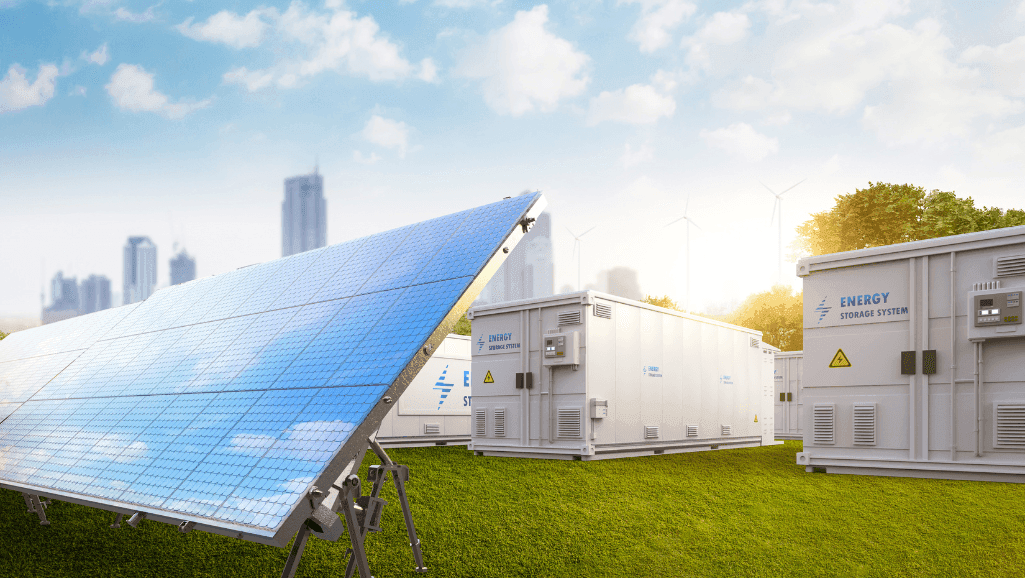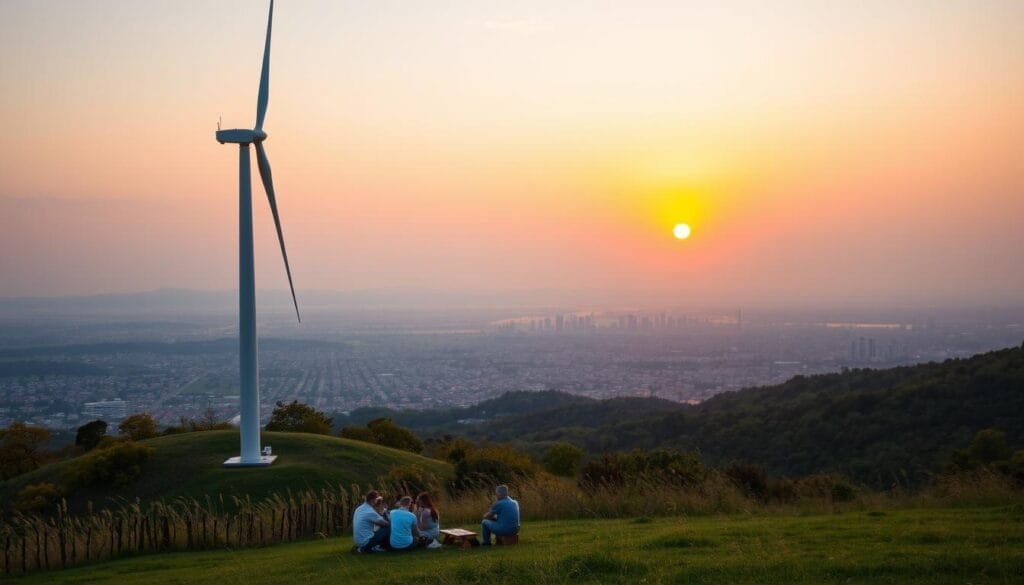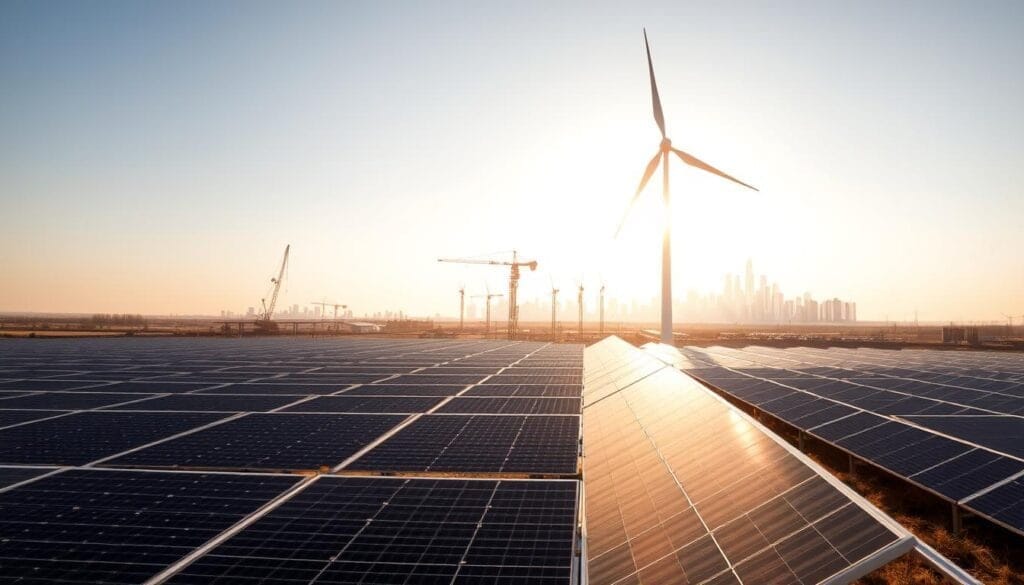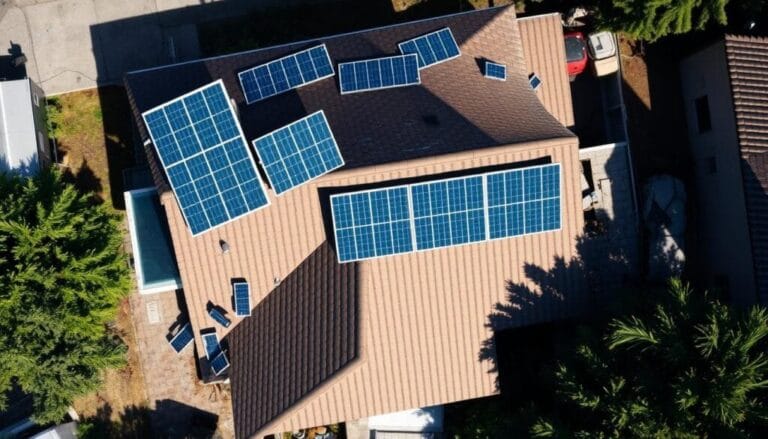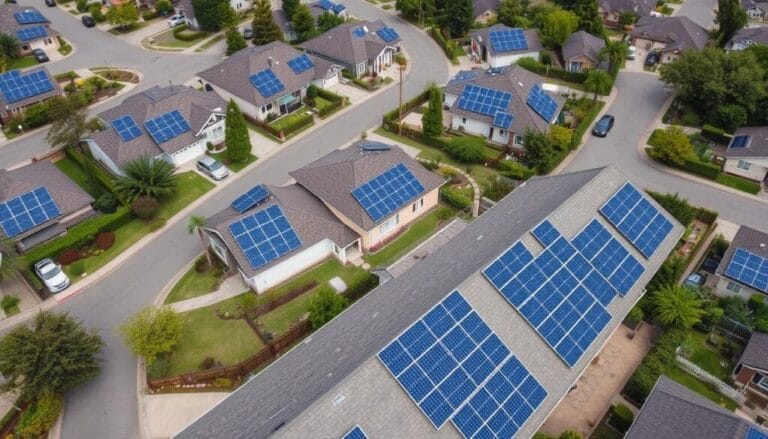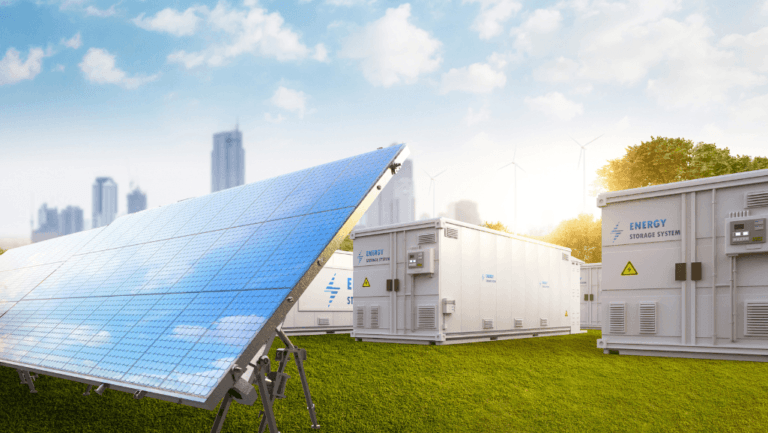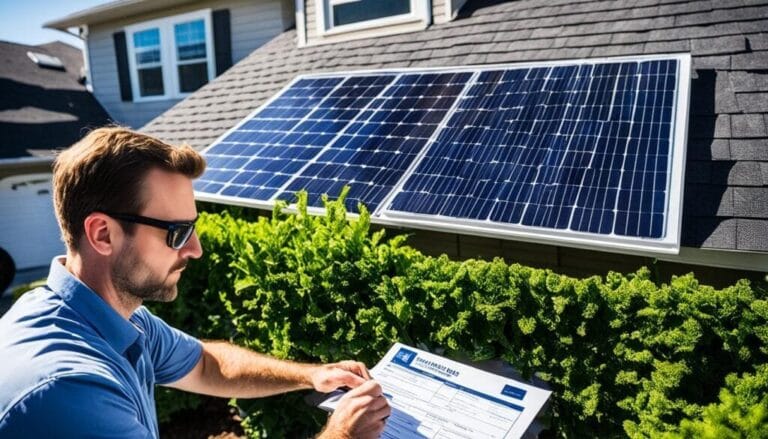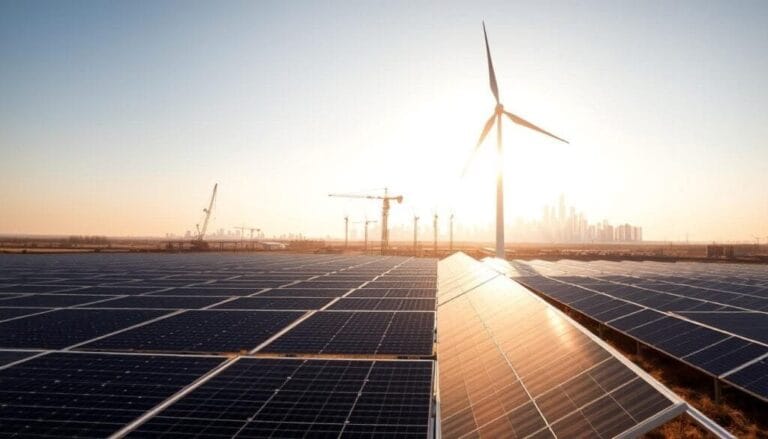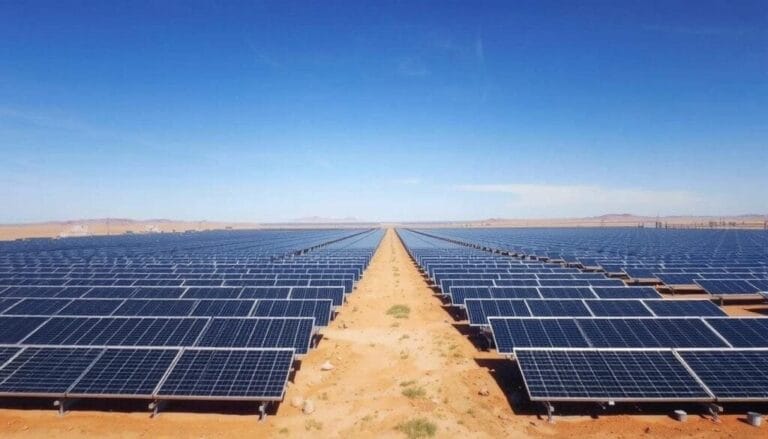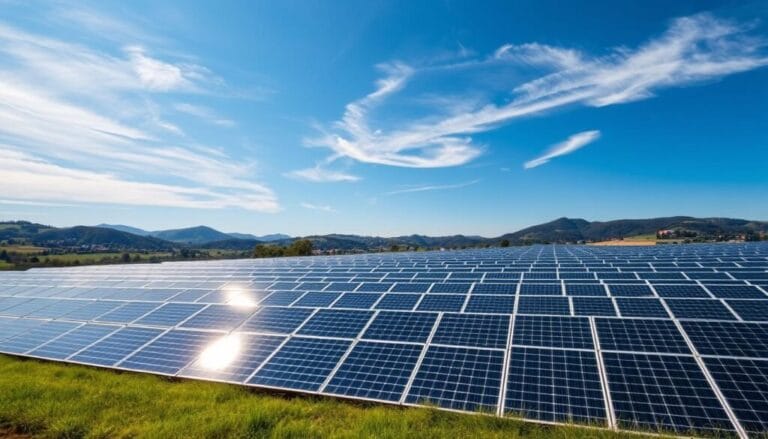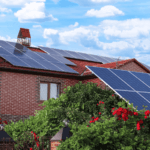Learning about energy basics gives practical insight into how we use and manage energy resources in daily life. This guide explains how we convert natural inputs — from wind and the sun to fossil fuels — into useful forms, and how smart energy technology and energy management can increase the value we get from limited supplies.
At the heart of energy basics is our connection to the sun and to other natural processes that power life on earth. While some resources (for example, geothermal and nuclear) do not come directly from sunlight, the sun drives much of the planet’s climate and biological systems, which is why efficient use of solar and other renewable sources matters. Using energy wisely preserves stock resources like fossil fuels and lowers environmental impact.
Key Takeaways
- Understand transfer and conservation: energy moves between forms and cannot be created or destroyed in a closed system — knowing this helps optimize how much useful work we extract.
- Connect services and resources: awareness of how energy services (heating, lighting, transport) map to physical resources is essential to improving efficiency.
- Adopt sustainable technology: practical sustainable practices and newer energy technology reduce reliance on nonrenewable fuels and cut emissions.
- Manage systems holistically: effective energy management combines quantity measures (units, flows) with system dynamics to reduce waste and improve reliability.
- Make changes that matter: tailoring systems to local primary resources (wind, solar, or responsibly managed fossil fuels) helps meet demand responsibly — for example, switching household lighting to LEDs can cut lighting electricity use by 50–80%, a simple, high-value change.
What is Energy?
Energy is the capacity to do work and to cause change — from moving objects to powering lights and sustaining biological processes. It shows up in many forms across daily life and industry, and learning basic energy concepts helps us use and conserve it so communities and ecosystems thrive.
Defining Energy and Its Significance
At its core, energy is what allows things to happen: it warms homes, runs factories, and fuels transport. Understanding energy’s role — how it moves between forms and how much of it we actually get to use — informs better policy, smarter energy technology, and everyday choices that reduce waste and cost.
Common Units of Energy: kWh, Joule, and Btu
We measure the amount of energy using different units depending on context. Here are three widely used units:
- Kilowatt-hour (kWh): The unit utilities use for electrical billing. One kWh equals a device drawing 1,000 watts for one hour.
- Joule (J): The SI unit of energy. One joule equals applying one newton of force through one meter (1 J = 1 N·m).
- British thermal unit (Btu): Common in U.S. heating contexts. One Btu is roughly the heat required to raise one pound of water by one degree Fahrenheit under typical conditions.
| Energy UnitDefinitionCommon Uses | ||
| Kilowatt-hour (kWh) | 1,000 watts used over one hour | Electricity billing, industrial energy consumption |
| Joule (J) | One newton of force moved one meter | Scientific calculations, mechanical work |
| British thermal unit (Btu) | Heat to raise one lb of water by 1 °F (approx.) | Heating systems, fuel/food energy content |
Quick examples to visualize units: a 60 W lightbulb running for 10 hours uses 0.6 kWh; 1 kWh = 3.6 million joules (3.6 × 10^6 J); 1 Btu ≈ 1,055 J. These conversions help you compare devices and understand true energy use.
Want to try it yourself? Use an online calculator to convert watts and hours into kWh and estimate monthly energy bills — a practical step toward reducing consumption and increasing efficiency.
Demystifying Power in Energy Terms
Understanding power is essential for making sense of how we produce and use energy. Power tells us the rate at which energy is delivered or consumed — in other words, how quickly one form of energy becomes another — and that rate determines system sizing, costs, and opportunities for improving energy efficiency.
The Relationship Between Energy and Power
Power describes how fast we use energy: energy = power × time (E = P × t). That means if you know a device’s power draw (in watts) and the time it runs, you can compute the amount of energy it uses. This relationship is the backbone of planning for both small-scale needs (home appliances) and large-scale energy production systems.
Standard Power Units and Their Real-World Application
Power is measured in watts (W), which equals joules per second (J/s). The unit name “watt” honors James Watt; modern SI definitions tie these units to precise physical constants. For larger systems we use kilowatts (kW) or megawatts (MW) to describe generation capacity and machine ratings.
Knowing how to move between power and energy units helps with budgeting and design. For example, converting power to energy shows how instantaneous rates translate into billed consumption (kWh).
| Power UnitDescriptionCommon Uses | ||
| Watt (W) | One joule per second | Light bulbs, computers |
| Kilowatt (kW) | One thousand watts | Household appliances, electric vehicles |
| Kilowatt-hour (kWh) | Energy consumption over time (power × time) | Electricity billing, energy monitoring |
Practical example: a 100 W incandescent bulb uses 0.1 kW; left on for 10 hours, it consumes 1.0 kWh. Swap that bulb for a 12 W LED (same light output) and you use 0.12 kWh for the same 10 hours — an easy way to cut household power draw and the cost of running lights.
As you select devices or evaluate energy production options, track both power (how big the equipment must be) and energy (how much it will consume over time). That dual view — power and the energy that flows over time — is how planners and homeowners alike make efficient, cost-effective choices.
The Pillars of Energy: Laws of Thermodynamics
The fundamental laws of thermodynamics set the limits on what energy systems can do. They describe how energy is conserved, how useful work is limited by irreversibility and entropy, and how behavior approaches theoretical limits at very low temperatures. These principles began as practical rules for steam engines and now guide modern engineering, energy services, and system design.
First law (conservation): Energy cannot be created or destroyed in a closed system — it only changes form. Practically, this means accounting for all energy flows in a system (input, useful output, and losses) is the foundation of good energy management.
Practical takeaway: Track energy inputs and outputs in a system to identify waste and recovery opportunities (e.g., waste heat recovery in industrial processes).
Second law (entropy and irreversibility): Not all energy can be converted to useful work; some is always dispersed as heat and increases entropy. This sets theoretical limits (Carnot efficiency) on heat-to-work conversion and explains why real systems are less than 100% efficient.
Practical takeaway: Design choices — temperature differences, pressure levels, and process integration — determine how close systems can approach theoretical efficiency. For example, a Carnot engine operating between 600 K and 300 K has a maximum (ideal) efficiency of 50%.
Third law (absolute zero behavior): As temperature approaches absolute zero, the entropy of a perfect crystalline substance approaches a constant minimum. This law mainly guides low-temperature physics and helps define limits for cryogenics and material research used in advanced energy technologies.
Practical takeaway: While not directly affecting most power plants, the third law informs material properties and limits for technologies (e.g., superconductors) that can improve energy conversion and storage.
| LawApplication in IndustryRelevance to Energy Services | ||
| First Law | Energy conservation in power systems; heat recovery | Foundation for energy management and auditing; ensures energy accounting |
| Second Law | Heat engines, refrigeration, power plant limits | Drives efficiency optimization in heat-to-work conversion and process design |
| Third Law | Low-temperature research, cryogenics, superconducting materials | Influences theoretical and applied limits for advanced technologies |
These thermodynamic laws are central to how we plan and improve energy systems. They explain why some losses are unavoidable, point to where improvements are possible (better heat recovery, higher temperature cycles, reduced irreversibilities), and help set realistic expectations about the value we can extract from any energy process.
Breaking Down Key Energy Concepts
To plan and run modern societies we need clear concepts for how energy is produced, transformed, stored, and used. This section breaks down core terms — primary energy, secondary energy or energy currencies, and storage — so you can see how different sources and forms fit together and why that matters for sustainable systems.
Primary Energy Sources: The Building Blocks
Primary energy is energy found in nature before conversion. Typical primary sources include fossil fuels (coal, oil, natural gas), nuclear (current commercial technology is fission; fusion is an active research goal), and renewable flows such as sunlight, wind, hydro (gravitational/kinetic), geothermal, and biomass. Each source delivers different forms of energy (thermal, chemical, kinetic, electrical) with different qualities and uses.
The Multiple Faces of Energy: Currencies, Services, and Storage
Once extracted or captured, primary energy is often converted into secondary forms — the energy currencies we actually use. Common currencies are electricity, gasoline, and heat. These currencies deliver services like lighting, motive power, and cooking.
Energy storage smooths the mismatch between when energy is produced (flow) and when it’s needed. Short-term storage examples include batteries (home systems often 5–20 kWh capacity) and thermal storage; long-duration options include pumped-storage hydro and compressed air, which can store megawatt-hours for grid use. Storage is essential for integrating intermittent renewable sources like solar and wind into reliable systems.
Understanding primary sources, secondary forms, and storage helps planners and homeowners choose the right mix for local conditions — for example, pairing rooftop solar with a modest battery for evening lighting and appliance loads.
| Energy SourceTypeCommon Uses | ||
| Solar Energy | Renewable (flow) | Electricity generation, heating, distributed rooftop systems |
| Coal | Non-renewable (stock) | Electricity generation, industrial heat |
| Nuclear Power (fission) | Non-renewable (stock) | Electricity generation, high-capacity baseload |
| Wind | Renewable (flow) | Electricity generation, utility-scale turbines |
| Natural Gas | Non-renewable (stock) | Heating, electricity generation, backup power |
| Biomass | Renewable (flow/stock depending on management) | Heating, electricity generation, biofuels |
By seeing energy as a chain — from primary sources to energy currencies to storage and services — you can better evaluate trade-offs (cost, emissions, reliability) and choose practical solutions. For example, chemical energy in fuels is high-density for transport, while electrical energy is ideal for appliances and digital systems — understanding these concepts helps match fuel or technology to the job.
Energy Resources and Their Impact
The balance between renewable and nonrenewable energy shapes how we produce power and the environmental consequences of those choices. Understanding the different types of energy resources — their benefits, limits, and emissions profiles — is essential for planning a cleaner energy future.
Stock and Flow: Understanding Renewable vs. Nonrenewable
Energy sources fall into two practical categories: stock (finite) and flow (ongoing). Stock resources such as coal, oil, and natural gas are extracted from finite deposits and supply much of today’s energy. Flow resources — sunlight, wind, and running water (hydropower) — are continuously replenished and offer long-term sustainability when managed well.
Different countries emphasize different mixes: some lean on coal or gas for baseload power, while others scale solar and wind rapidly. The U.S. Energy Information Administration (EIA) is a good source for up-to-date data on national consumption and production mixes.
Energy Quality and Environmental Considerations
Energy quality — how concentrated and useful a source is — affects both system design and environmental impact. High-density fuels like oil and natural gas are convenient for transport and industry but typically emit more greenhouse gases per unit of energy than most renewables. Renewable energy sources generally have lower operational emissions, though lifecycle impacts vary by technology and feedstock.
For example, sustainably sourced biomass can reduce net CO2 emissions compared with fossil fuels, but outcomes depend on land use and supply-chain practices. Solar panels and wind turbines have low operational emissions and, paired with storage, can reduce reliance on fossil-fueled generators. Rooftop solar also gives homeowners options to reduce grid dependence and, in many regions, sell surplus electricity back to the grid under net metering or feed-in programs (policies vary by location).
| Resource TypeBenefitsChallenges | ||
| Solar and Wind Energy | Low operational emissions, reduces grid dependency, scalable | Intermittency; requires grid integration and storage; geographically dependent |
| Biomass Energy | Can use residues and reduce waste; potential lower net emissions | Requires sustainable supply; land-use trade-offs; variable emissions by feedstock |
| Geothermal Energy | High capacity factor, steady baseload power | Site-specific resources; upfront development costs |
Adopting more renewable sources and smarter system design — including energy storage and demand-side measures — lowers our dependence on nonrenewable resources and can reduce environmental harm. Practical planning accounts for local resource flows (sun hours, wind patterns, water availability) and the water, land, and material needs of each technology.
Energy Basics in Everyday Life
Learning about energy efficiency, usage, and conservation helps us every day. These ideas are key to making the most of energy in our homes and communities, lowering bills and environmental impact.
Our daily routines rely on a mix of energy sources. Globally, much energy still comes from oil, coal, and gas, but new solar energy tech and falling equipment costs are shifting the balance toward cleaner options — especially at the household level.
| Energy SourceUsageNotes | ||
| Nuclear Energy | Primary in France | High capacity factor; long-term ROI |
| Hydropower | Heavily utilized in Canada | Renewable and reliable where geography permits |
| Solar Energy | Increasingly adopted worldwide | Costs decreasing; good fit for distributed generation in homes |
Understanding basic energy forms helps make better daily choices. Light energy (visible light) powers illumination; mechanical and kinetic energy show up when we move or when machines operate. Simple actions — turning off lights, lowering thermostat setpoints, and choosing efficient appliances — add up.
Quick, actionable tips for households
- Swap to LEDs: an 8–12 W LED can replace a 60 W incandescent and cut lighting energy by ~80% (example: a 60 W bulb run 5 hours/day uses 0.3 kWh/day; the LED equivalent uses about 0.05–0.06 kWh/day).
- Use smart power strips and unplug chargers to reduce standby loads — small but constant draws add up over a month.
- Seal air leaks and insulate: reducing heat loss reduces heating/cooling energy use, often saving more than the cost of improvements.
- Consider a modest battery with rooftop solar to shift daytime solar generation into evening use, improving self-consumption and resilience.
Everyday energy choices also involve the body and local plant systems: walking or cycling for short trips uses human kinetic energy (zero fuel emissions) and supports personal health. Small changes at home and in routines build toward larger community-level impacts.
Want a simple estimate? Replace one 60 W incandescent with an LED and run it 4 hours/day — you’ll save about 7.2 kWh/year for that single fixture. Multiply by the number of bulbs in a typical home and the savings become meaningful.
Energy Efficiency and Its Role in Sustainability
As we face environmental and economic challenges, energy efficiency is one of the fastest, lowest-cost ways to lower emissions and reduce operating expenses. Efficient technologies and smarter systems let us get the same services — lighting, heating, transport — while using less energy, which supports long-term sustainable energy goals.
Measuring Conversion Efficiency in Energy Systems
“Efficiency” means different things in different contexts. For thermal power plants, it’s the fraction of fuel chemical energy converted into electricity (thermal-to-electric conversion). For lighting, efficiency is luminous efficacy (lumens per watt). Understanding which process and metric you’re measuring is essential when comparing options and setting policy.
Modern natural gas combined-cycle plants reach much higher thermal-to-electric efficiencies than older coal plants because they capture waste heat in a secondary turbine stage. That higher conversion efficiency typically means lower CO2 emissions per kWh, although lifecycle emissions and methane leaks in the gas supply chain also matter.
Examples of Energy Systems: From Coal to LEDs
Here are representative efficiency figures (context noted):
| Energy SystemTypical EfficiencyNotes | ||
| Coal power plant | Approx. 33% (thermal-to-electric) | Older subcritical plants; modern supercritical units are higher but still emit significant CO2 per kWh |
| Natural gas combined-cycle | Up to ~60% (thermal-to-electric, combined stages) | Higher efficiency lowers CO2 per kWh compared with many coal plants; savings depend on system design and fuel supply emissions |
| LED lighting systems | High luminous efficacy (can reduce lighting energy use by 70–85%) | LEDs convert electrical energy to visible light far more efficiently than incandescent bulbs (different metric: lumens/W) |
Example: replacing a 60 W incandescent with a 10 W LED that provides equivalent light cuts lighting energy use by ~83% — a straightforward household action with immediate payback in energy saved.
Policy and investment that favor higher-efficiency systems (upgrading coal plants, deploying combined-cycle gas where appropriate, or replacing legacy lighting with LEDs) reduce overall energy demand and lower emissions. For deeper decisions, use tools that compare full lifecycle emissions, including fuel extraction, transport losses, and operational efficiency.
Understanding Energy Consumption and Production
Examining how we consume and produce energy clarifies everyday costs, shapes policy, and drives innovation in plants, grids, and devices. Clear data on consumption by sector and production by fuel type helps decision‑makers balance reliability, cost, and emissions.
An Overview of Energy Use in Various Sectors
The industrial sector is an intensive energy user, relying heavily on fossil fuels to power heavy machinery, chemical processes, and high-temperature heat. Transport and buildings also account for large shares of final use; together these sectors determine the bulk of national energy demand.
For context, sectoral and fuel shares change over time and differ by country — authoritative sources such as the U.S. Energy Information Administration (EIA) or the International Energy Agency (IEA) provide the latest breakdowns for consumption and production.
Insight into Renewable and Nonrenewable Resources
Energy systems are shifting: as renewable technologies scale up, the amount of electricity and heat provided by wind, solar, and other renewables grows while the relative share of some fossil fuels declines. This transition reduces lifecycle emissions when renewables displace coal or oil in power generation and heating.
When comparing consumption vs. production, remember the distinction between primary energy (the original fuel input) and final energy (what end users consume). Production mixes influence how much electricity is generated on grid-connected plants, while consumption patterns show how much energy households, industry, and transport actually use.
| Energy SourceTypical share in consumption (example)Notes | ||
| Petroleum | Large share in transport and industry | Dominant liquid fuel for mobility; subject to price volatility |
| Natural Gas | Significant share for heating and power | Flexible for power plants and balancing; supply emissions matter |
| Coal | Declining share in many countries | High emissions per unit of energy; still used in some baseload plants |
| Nuclear | Stable baseload contributor | Low operational CO2; long asset lifetimes |
| Renewables (wind, solar, hydro) | Growing share of electricity | Intermittency requires storage or backup; rapid deployment in many markets |
Practical point: convert power ratings to energy to understand real impacts — a 1 MW plant operating for one hour produces 1 MWh of electricity; multiply by the number of operating times (hours) to estimate monthly or annual amount of energy generated. For policy and planning, always cite primary data sources (EIA, IEA) when using percentage shares or trend figures.
Conclusion
Understanding energy basics gives you the tools to see how different forms of energy — mechanical, electrical energy, heat/thermal, light, and sound — are created, converted, and used in everyday life. That understanding clarifies the value of efficiency, shows the amount of energy needed for common tasks, and helps communities plan better energy systems for a resilient future on earth.
Education and clear concepts about kinetic and potential energy, and how one formanother, are essential for better energy management and wider adoption of sustainable practices. Learning the basic units and conversion ideas also helps people compare options—for example, how chemical energy in fuels compares with electrical energy stored in batteries.
New energy technology and data-driven methods — from improved solar panel designs to advanced materials discovery projects like the Materials Genome Initiative — accelerate gains in efficiency and lower costs. As technologies improve, buildings and transportation systems become better at capturing useful energy and reducing waste heat and losses through smarter process design and controls.
These innovations reduce the pressure on finite resources and expand the role of renewables. They also change the way the economy uses energy: more efficient plants and systems mean less fuel per unit of output, and better storage and control let us match supply to demand with lower environmental impact.
Practical next steps: download a home energy checklist, compare solar and storage quotes, or run a simple conversion exercise (e.g., convert watts and hours into kWh) to see the amount energy you use. Small actions — sealing leaks, switching to LEDs, or adding insulation — reduce the heat losses and lower fuel and electricity use at the household level.
The link between energy resources, the economy, and the environment is the focus of global institutions (for example, the International Energy Agency) and energy policy researchers. For deeper study, experts such as Richard Lester and Robert Rosner discuss how technology and policy interact; academic resources and recommended readings (some behind subscription, like the linked Oxford chapter) provide historical and philosophical perspectives on energy and climate.


